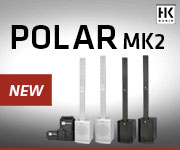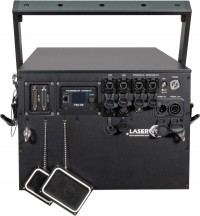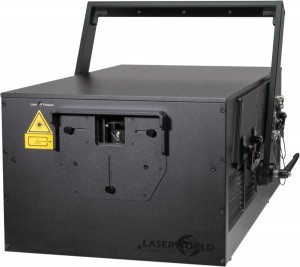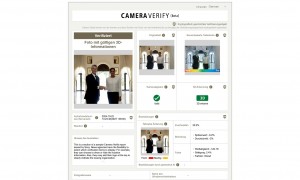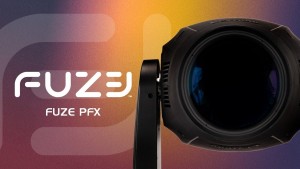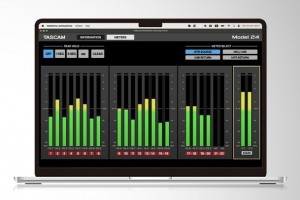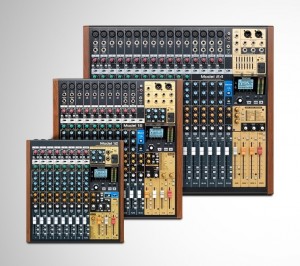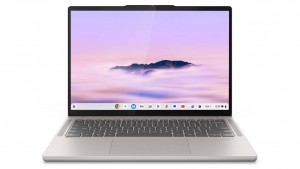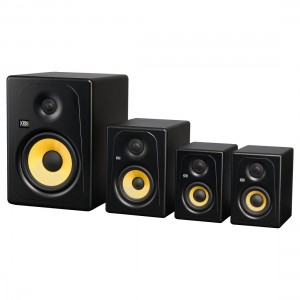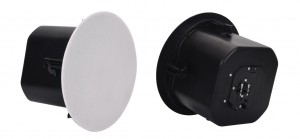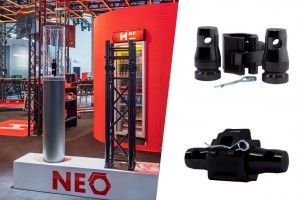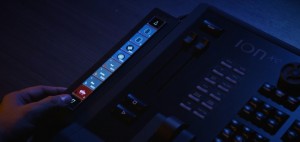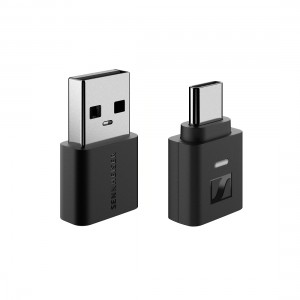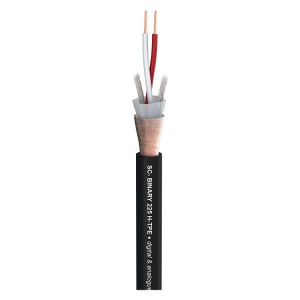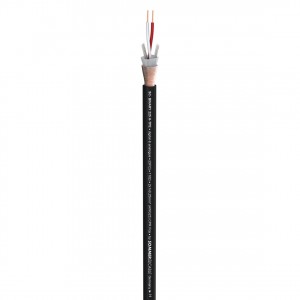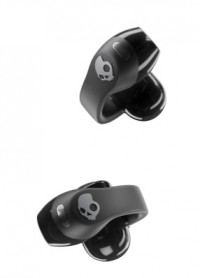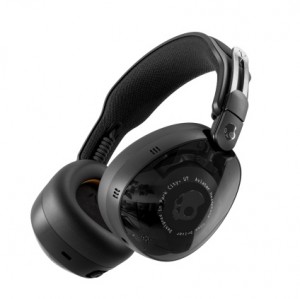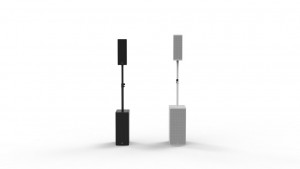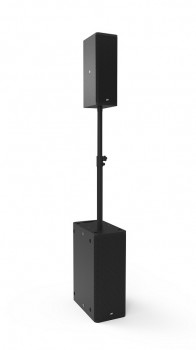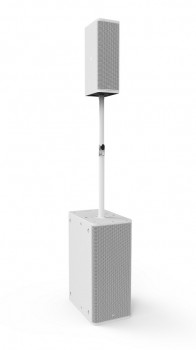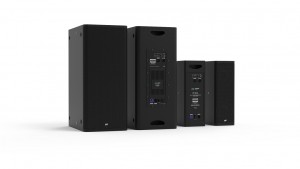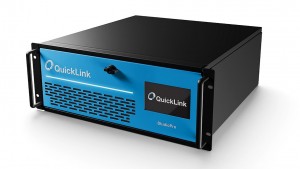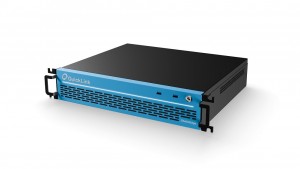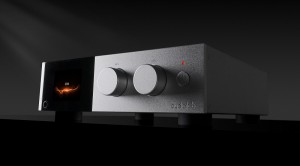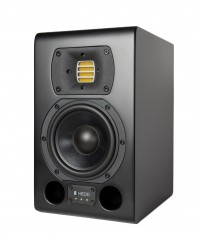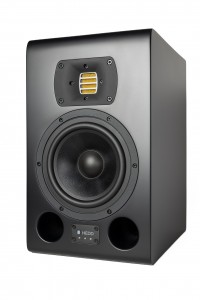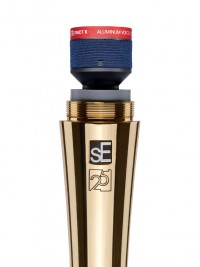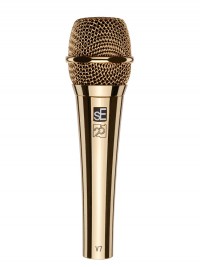Equipment News
Equipment News Schlagzeilen
Dolby, Lenovo und Google bringen weltweit erstes Chromebook mit Dolby Atmos auf den Markt
25/06/2025
Neo-Truss-Verbinder von Hof erhältlich
17/06/2025
Sommer Cable stellt neues AES/EBU- und DMX-Kabel mit 2 x 0,25 mm² und Soft-HTPE-Mantel vor
03/06/2025
Work Pro introduces Raptor series
03/06/2025
Laserworld präsentiert neue Purelight-IP65-Serie
Laserworld stellt eine neue Generation von Lasersystemen vor, die für den harten Außeneinsatz, etwa auf Festivals und anderen Großveranstaltungen, entwickelt wurden. Die neue Purelight-IP65-Serie umfasst Modelle von 5 bis 70 Watt Leistung mit IP65-Rating und hoher Robustheit.
Das Modell PL-5000RGB IP65 ist vor allem für Grafikprojektionen konzipiert. Das 5-Watt-System bietet eine Scan-Performance von 45 kpps @ 8° und einen Strahldurchmesser von 5 mm mit einer Divergenz von 0,9 mrad.
Das bereits etablierte Modell PL-30.000RGB IP65 für Festivals mittlerer bis großer Dimensionen wurde von Laserworld überarbeitet. Es ist mit 35 kpps @ 8° ebenfalls grafikfähig und mit einem Strahldurchmesser von 6,5 mm sowie einer Divergenz von 0,9 mrad ausgestattet.
Die Modelle PL-10.000RGB IP65 und PL-20.000RGB IP65 ergänzen die Purelight-Serie für kleinere bis mittlere Festivals.
Der PL-70.000RGB IP65 liefert hohe Leistung bei kompakter Bauweise und ist mit seinen 11 mm Strahldurchmesser bei einer Divergenz von 1,1 mrad auch über lange Distanzen gut sichtbar.
Alle Modelle der Purelight-IP65-Serie sind mit einem intelligenten ShowNet- oder einem FB4-Mainboard erhältlich. Anwender können die Lasersysteme direkt über Netzwerk mit verschiedenen Softwarelösungen verbinden. Das ShowNet-Mainboard ermöglicht Anwendern den Einsatz der Lasersysteme via DMX, Art-Net oder direkt mit kompatiblen Lasershow-, Video- und Multimediasoftware-Lösungen. Die Geräte der neuen Serie werden standardmäßig in einem wasserdichten Kunststoff-Flightcase geliefert.
(Fotos: Laserworld AG)
Panasonic to release new range of 4K-ready entry-level displays
Panasonic Projector & Display Corporation has announced the EQ3 Series of entry-level flat panel 4K displays, available in six sizes from 43’’ to 86’’, providing a solution for a variety of environments such as corporate meeting rooms and classrooms.
Each display features a 4K resolution of 3840 x 2160 pixels - four times higher than FHD displays - and brightness of 500 cd/m². The EQ3 Series uses an ADS wide-view panel, coated with a high haze treatment. This reduces glare in bright environments, delivering accurate and vivid colours, regardless of viewers’ position.
Available in 86’’, 75’’, 65’’, 55’’, 50’’, and 43’’ display sizes, the EQ3 Series is suitable for environments of any size. Each display can be installed in landscape or portrait orientation, tilted either forwards or backwards by up to 20°. The EQ3 Series is capable of operating for up to eighteen hours a day.
Each EQ3 Series features three HDMI inputs, with CEC support enabling users to operate basic functions on connected devices from the display’s remote control. It also features a built-in 4K USB Media Player, enabling users to seamlessly play content from a USB device.
The displays support external control via LAN or RS-232 (PJLink) and are also compatible with AMX D.D./Crestron Connected (V2) and Crestron XiO Cloud LAN Control for centralised remote network management.
The EQ3 Series of displays will be available from Q3 CY2025.
(Photo: Panasonic Connect Europe)
https://eu.connect.panasonic.com
Cambridge Audio bringt drahtlose Earbuds mit Wasserschutz und Noise-Cancelling heraus
Cambridge Audio stellt neue drahtlose Earbuds für den mobilen Musikgenuss vor: Der Melomania A100 erreicht bis zu elf Stunden Akkulaufzeit ohne Nachladen und bietet aktive Geräuschunterdrückung (ANC) sowie einen Wasserschutz nach IPX5. Angetrieben werden die 10-mm-Neodym-Treiber des A100 von einem Verstärker in echter Class-AB-Schaltung, wie man sie auch aus den Heim-Verstärkern von Cambridge Audio kennt. Musik kann über Bluetooth 5.4 zum A100 übertragen werden.
Der A100 unterstützt LDAC, aptX Lossless und AAC. Damit ist die Zuspielung von digitaler Musik in der höchstmöglichen Qualität des jeweiligen Zuspielgerätes garantiert. Zusätzlich verfügt der A100 über die von Cambridge neu entwickelte DynamEQ-Technologie, welche dafür sorgen soll, dass auch bei geringer Lautstärke Details intakt und ausgewogen bleiben.
Mit vollständig geladenem Akku erreicht der Melomania A100 bis zu elf Stunden ununterbrochener Wiedergabe, wenn ANC ausgeschaltet ist; mit Geräuschunterdrückung sind es 6,5 Stunden. Die flache, ergonomische Ladeschale bietet bis zu 28 weitere Stunden Nutzungsdauer. Mittels Schnellladefunktion können die Earbuds binnen zehn Minuten Ladezeit genug Energie für drei Betriebsstunden aufnehmen.
Der A100 verfügt über eine aktive Geräuschunterdrückung, die eine hybride Kombination aus Feed-Back- und Feed-Forward-Technologie mit externen Mikrofonen zur Überwachung der Umgebungsgeräusche und Mikrofonen im Gehörgang verwendet. Die insgesamt sechs Mikrofone pro Set sorgen zudem für Sprachverständlichkeit beim Telefonieren und Diktieren.
Bluetooth 5.4 mit seiner Multipoint-Option ermöglicht eine gleichzeitige Verbindung des Melomania A100 mit zwei smarten Devices. Nutzer können dadurch beispielsweise Musik vom Laptop oder Tablet hören, die Bedienung der App aber vom Smartphone aus vornehmen. Für eine möglichst passgenaue, geräuschisolierende Abdichtung bietet der A100 drei Größen von Silikon-Aufsätzen.
Der A100 klingt ab Werk wie eine klassische HiFi-Komponente aus dem Hause Cambridge Audio und bietet mithilfe der Melomania Connect App einen 7-Band-Equalizer an, um den Sound auf den Musikgeschmack von Nutzern und die Wahrnehmung der Ohren anzupassen. Sechs Voreinstellungen, die nach bestimmten Erfahrungswerten auf verschiedene Musikgenres zugeschnitten wurden, lassen sich durch individuelle Kurven ergänzen. Nutzer können diese frei einstellen, speichern und benennen. Alle Touch-Bedienelemente der Ohrhörer können über die Melomania Connect App individuell angepasst werden. In der App, die im Apple Appstore und im Google Playstore kostenlos erhältlich ist, kann auch die Zuordnung der Touch-Bedienelemente frei belegt werden.
Der Melomania A100 ist ab 26. Juni 2025 in den Farbvarianten Schwarz oder Weiß erhältlich.
(Fotos: Cambridge Audio)
Sonys Beta-Version von „Camera Verify” ermöglicht externe Weitergabe von Informationen zur Bildauthentifizierung via URL
Sony präsentiert die Beta-Version von „Camera Verify“, einer Lösung zur Authentifizierung von Kameras. Mit der neuen Version kann die externe Weitergabe von Informationen zur Bildauthentifizierung nun über eine spezielle URL erfolgen. Diese Funktion soll Bild- und Nachrichtenagenturen dabei unterstützen, die wachsende Herausforderung beim Authentifizieren digitaler Bilder im KI-Zeitalter zu bewältigen.
Weil KI-generierte und manipulierte Inhalte immer ausgefeilter werden, ist der Bedarf an vertrauenswürdigen, überprüfbaren Bildern größer denn je, insbesondere für Medienprofis. Die Camera Authenticity Solution von Sony wurde entwickelt, um diesen Anforderungen gerecht zu werden. Dabei werden C2PA-Signaturen (Coalition for Content Provenance and Authenticity) und die proprietären 3D-Tiefeninformationen von Sony direkt zum Zeitpunkt der Aufnahme in das Bild eingebettet.
Die Authentizitätsinformationen des Bildes können auf der Bildvalidierungswebsite überprüft werden. Mit der neu hinzugefügten Funktion „Camera Verify“ (Beta) können Nachrichtenagenturen nun externe URLs für Bilder mit eingebetteten digitalen Signaturen herausgeben. So können Dritte die Verifizierungsergebnisse über zuverlässige URLs einsehen, die direkt von der Verifizierungswebsite ausgegeben werden. Mit dieser Funktion können Organisationen bestimmte Authentizitätsmerkmale auswählen, die während des Veröffentlichungs- und Verbreitungsprozesses von Inhalten geteilt werden sollen. Das beschleunigt das Veröffentlichen glaubwürdiger und überprüfbarer Inhalte.
Darüber hinaus kann die Digital Signature License, mit der digitale Signaturen direkt in mit unterstützten Sony-Kameras aufgenommene Bilder eingebettet werden können, jetzt über die Creators’-Cloud-Website erworben werden. Das erweitert die Zugänglichkeit für mehr Fachleute.
Sony plant, die Unterstützung für Videoinhalte nach dem Herbst 2025 im Rahmen seines Engagements für die Förderung vertrauenswürdiger digitaler Medien auszuweiten. Neben seinen Aktivitäten im C2PA-Lenkungsausschuss sei das Unternehmen bestrebt, die Zuverlässigkeit von Inhalten im Medienbereich weiter zu verbessern.
(Foto: Sony)
KD kooperiert mit Leopard Imaging und Corning Incorporated für IEEE-802.3cz-konforme Multigigabit-Vision-Systemlösung
Das Fabless-Halbleiterunternehmen KD meldet die erste Implementierung seines optischen 10GBase-AU-Transceivers KD7251 in die LI-Venus-ISX031-Base-AU, eine optische Multigigabit-Kamera für den Automobilbereich von Leopard Imaging, einem Anbieter von Embedded Vision und KI-Kameratechnologie.
Corning Incorporated hat ein hybrides Kabel- und Steckersystem entwickelt, das auf Cornings Kabeln und Steckern in Automobilqualität basiert. Das neue System bietet eine skalierbare Datenkommunikation mit bis zu 10 Gbit/s durch das Upgrade des bestehenden Weitwinkel-Kamerasystems von einer herkömmlichen GMSL2-Kupferschnittstelle auf eine Glasfaser-basierte 10GBase-AU-Verbindung, die konform zum IEEE-802.3cz-Standard ist. Damit steht eine zukunftsfähige Lösung bereit, welche die Anforderungen an das Netzwerk in Fahrzeug-Anwendungen wie autonomem Fahren, Fahrerassistenz (ADAS), digitaler Videoaufzeichnung und industrieller Bildverarbeitung erfüllt.
„Wir haben unseren optischen Transceiver KD7251 erfolgreich in die LI-Venus-ISX031-Base-AU-Kamera von Leopard Imaging integriert. Dieser Durchbruch zeigt die Funktionsfähigkeit unseres KD7251-Transceivers in kompakten Automobil-Kameramodulen (Leiterplatte unter 20 x 20 mm) bei gleichzeitig größeren Entfernungen von bis zu 40 Metern“, sagt David Sanchez, Hardware-Designer bei KD und Projektleiter der technologischen Zusammenarbeit. „Der Einsatz von Glasfaser beseitigt die Probleme der elektromagnetischen Verträglichkeit (EMV), reduziert das Kabelgewicht und unterstützt asymmetrische Verbindungsgeschwindigkeiten für optimierten Stromverbrauch. Damit ist diese Innovation wesentlich für zukünftige Fahrzeugnetzwerke, bei denen eine hohe Bandbreite, geringe Latenz und Interferenz-freie Datenverbindungen entscheidend sind.“
Mit der neuen optischen Verbindung unterstützt die LI-Venus-ISX031-Base-AU-Kamera eine höhere Datenübertragung, höhere Auflösung und größere Bildtiefe. Mit dem Austausch der Kupferschnittstelle durch den optischen Transceiver KD7251 steigt die Konnektivität im Fahrzeug erheblich von 3 Gbit/s auf bis zu 10 Gbit/s.
Die Kamera wiegt 162 Gramm. Sie ist mit dem Sony-Diagonal-7,45-mm-(Typ 1/2.42)-CMOS-Bildsensor ISX031 ausgestattet und eignet sich für den Einsatz in einem Surround-View-System. Die Integration des Kabel- und Steckersystems von Corning ermöglicht einen verbesserten Zugang zu komplexen Positionen, wie etwa im Innern eines Seitenspiegels. Darüber hinaus erlaubt das neue Kamerasystem Kabellängen von bis zu 40 Metern ohne Qualitätsverlust bei der Datenübertragung.
(Foto: KD)
Elation launches compact Fuze PFX for profile and FX lighting
The newest addition to Elation’s Fuze series, the Fuze PFX, brings the power and versatility of a multi-purpose automated fixture - now in a very compact footprint. Designed to deliver serious output and feature-rich flexibility in a smaller package, the Fuze PFX is designed for both production and installation environments.
It combines the precision of a profile fixture with the creative potential of an effects light. The Fuze PFX delivers over 15,000 lumens of output and can handle everything from tight beams and precise framing to expansive washes. With its 400 W white LED engine and the compact and lightweight form factor, the Fuze PFX is suitable for fast-paced productions, touring rigs, and discreet installations alike.
The Fuze PFX includes eighteen gobos (seven rotating and eleven fixed) and a zoom range from 3° to 53°, enabling mid-air effects and crisp image projections. Its two variable frost filters (Light and Wash) allow for even stage washes, while the seamless CMY color mixing with linear CTO correction provides a broad color palette. An 8-position color wheel features high CRI filters (80, 90) and a UV filter for additional flexibility.
The rotatable full-blackout framing blades offer precise beam shaping and enable users to isolate areas on stage, highlight scenic elements, or produce dynamic mid-air visuals. Dual independent rotating prisms (6-facet linear and 6-facet round) can be used together for layered effects, while a fast iris and the split CMY SFX wheel expand the creative toolkit. Additional features include a high-speed electronic shutter, strobe, and multiple 16-bit dimming curve modes for programming.
With its output and whisper-quiet operation, the Fuze PFX is designed for various environments, including theaters, TV studios, and houses of worship. It also comes fully equipped with the professional control features today’s designers expect.
(Photo: Elation)
Tascam erweitert Mixer der Model-Serie um Meter-Bridge-App
Tascam hat die Veröffentlichung einer Meter-Bridge-App für seine Aufnahmemischpulte Model 12, Model 16 und Model 24 bekanntgegeben. Die App ist als Teil eines kostenlosen Software- und Firmware-Updates erhältlich und ermöglicht es, große Pegelanzeigen direkt auf einem angeschlossenen Computer darzustellen.
Die neue Anwendung für die Pegelüberwachung wurde erstmals mit der Veröffentlichung des Model 2400 und der Studio Bridge eingeführt, beides 24-Spur-Recorder und USB-Audiointerfaces mit MIDI-Funktionalität. Durch ein Firmware-Update und die Installation der aktuellen Version 2.20 des Einstellungsfelds können nun auch Nutzer der Aufnahmemischer Model 12, Model 16 und Model 24 von dieser Funktion profitieren, die das Monitoring von Kanälen und Spuren erleichtert.
Die Meter Bridge kann entweder Kanaleingänge, Live-Eingänge, von einem PC zurückgegebene Kanäle oder aufgenommene Spuren anzeigen. Eine Peak-Hold-Funktion mit wählbarer Haltezeit ist ebenfalls vorhanden. Die neue Firmware für jedes Produkt und das „Model Mixer Settings Panel“ können unter www.tascam.eu/de/downloads heruntergeladen werden.
(Fotos: Tascam/TEAC Europe GmbH)
Dolby, Lenovo und Google bringen weltweit erstes Chromebook mit Dolby Atmos auf den Markt
Dolby Laboratories, Lenovo und Google stellen das neue Lenovo Chromebook Plus (14’’, 10) vor, das weltweit erste Chromebook mit Dolby Atmos. Dieses Gerät soll eine neue Ära von immersivem Audio auf Chromebooks einläuten und Sound für Verbraucher noch zugänglicher machen.
Dolby Atmos zielt darauf ab, Hörer mitten ins Geschehen zu versetzen, mit immersivem Klang, der über und um die Personen herum fließt. Dabei spielt es keine Rolle, ob Kopfhörer oder Laptop-Lautsprecher verwendet werden.
„Das Chromebook Plus ist ein wichtiger Meilenstein in unserer langjährigen Zusammenarbeit mit Dolby“, sagt Benny Zhang, Executive Director und General Manager of Chromebooks in der Intelligent Devices Group von Lenovo. John Maletis, VP of ChromeOS Product bei Google, ergänzt: „Unsere Priorität bei der Weiterentwicklung der Chromebook-Produktreihe ist es, außergewöhnliche Leistung und Erlebnisse zu bieten. Dolby ist ein unschätzbarer Partner auf dieser Reise.“
(Foto: Dolby Laboratories/Google/Lenovo)
KRK launches new two-way studio reference monitors
KRK introduces the Kreate Series Studio Monitors, the newest addition to the brand’s range of audio offerings, addressing musicians, engineers, producers, and content creators. These two-way studio monitors are designed specifically to meet the diverse needs of creatives, from casual playback to professional music and content production.
Suitable for mixing, producing, and content creation, the Kreate monitors offer wireless audio streaming capabilities with a pairable Bluetooth audio input alongside balanced and unbalanced analog inputs. They also have a universal voltage, switch mode power supply for seamless global operations.
Available in three sizes - three, five, and eight-inch - these entry-level active studio reference monitors feature a wide bandwidth, boundary and tuning EQs, new transducer designs, and Class D amplification. The Kreate Series also features acoustic boundary correction and tuning EQ combinations to help minimize and correct acoustic environment problems and dial in the voicing to meet specific application needs.
With KRK Kreate, composite woven glass fiber cone woofers provide dynamics with damping and deeper modal control to deliver tight and punchy mid- and low-frequency response. The glass fiber structure is heat-resistant and features a high strength-to-weight ratio, ensuring the monitors are highly adaptable and sonically accurate.
Additionally, high-frequency reproduction emanates from a woven-textile dome tweeter with a neodymium motor, which accurately extends the frequency range out to 40 kHz in the KRK Kreate 8 and 5 options, and up to 33 kHz in the 3 option, for a smoother, more detailed sound profile. The textile dome tweeters are used to create a smooth accurate response.
Furthermore, the system-tuning level control and low-frequency and high-frequency shelving filters allow for adjustment in various acoustic conditions. Hybrid Class D and Class AB amplification delivers power and headroom. The transducers are optimized for improved response and accuracy. For maximum transient response and dynamics reproduction, the amplifiers drive the transducers efficiently at reduced operating temperatures to ensure audio integrity during long work sessions.
The monitors are launching in KRK’s signature black/yellow style, as well as a latte/black color scheme (arriving this fall), with the Kreate 3 models sold as a pair and the Kreate 5 and Kreate 8 options priced individually. The series also continues KRK’s visual branding evolution, with packaging and stylization that closely align with other monitors from the brand’s product portfolio.
(Photo: KRK)
Lightware’s Lara Wizard helps integrators simplify audio-visual room automation with no coding required
Lightware’s Lara Wizard is designed to accelerate the set-up of audio-visual (AV) room automation and control configurations, ensuring anyone, from systems integrators to IT teams, can achieve their desired system configuration in minutes.
Lara is Lightware’s built-in room automation platform, which simplifies AV system control in meeting spaces. Pre-integrated into Lightware’s core products, it empowers users to design, deploy and manage professional AV systems quickly and efficiently. A key part of this efficiency is the Lara Wizard interface. This online service is the quickest way for users to get started, delivering reliable room control without writing a single line of code.
Designed for AV users, IT admins and integrators at all levels, Lara Wizard walks the user through key decisions and predefined device selections, creating a working configuration in a matter of minutes. Just a few guided questions bring professionals to room automation and video conference system integrations.
For set-up, users select the room type and set up needs, and the Lara Wizard will generate a configuration file. Once this file is uploaded to a compatible Lightware device, the system is ready to be used as desired. Integrators also have the option to further finetune the configuration in the Lara Editor. Current supported devices include the complete Taurus UCX series, the MMX2 series, Taurus TPN and Taurus TPX.
Integrator partners who use Lara can join the Lara Wizard Early Access Program, gaining access to exclusive features, content and updates. Feedback is also welcome, so the Lightware development team can continue offering updates.
Alfatron introduces new Dante ceiling speakers
Alfatron Electronics introduces the ALFC-657D full-range, 6-inch Dante ceiling speakers. Sold in pairs as one Master speaker (ALFC-657-DM) with a built-in 2 x 30 W POE (Power Over Ethernet) amplifier outfitted with a 2-channel Dante Input, and one Slave speaker (ALFC-657-DS) equipped with a Phoenix input, the new ALFC-657D ceiling speakers are designed for use in distributed sound reinforcement applications.
The ALFC-657D speakers use a flush-mounted design that enables them to blend into a wide range of environments. The Master speaker provides an amplified speaker output to drive the Slave speaker. Each pair of ALFC-657-D speakers are powered via the network POE switch. The system utilizes a 2-way, full-range loudspeaker design with a coaxial HF transducer.
The 6.5-inch woofer features a moisture/water-proof composite diaphragm. The ALFC-657D also offers a 1-inch silk dome tweeter with an adjustable angle, and a wide, flat frequency response ranging from 65 Hz to 20 KHz. The system has a high maximum SPL output of 111 dB. The ALFC-657D speakers are expected to be available August 2025.
(Photo: Alfatron Electronics)
Neues Aktiv-Bändchenmikrofon von Royer angekündigt
Royer Labs stellt mit dem R-12 ein neues Aktiv-Bändchenmikrofon für Studioaufnahmen und Live-Anwendungen vor. Für die Vielseitigkeit des R-12 sorgen unter anderem integrierte Bass-Cut- und Pad-Schalter. Damit eignet sich das Mikro für die Aufnahme von elektrischen und akustischen Saiteninstrumenten, Gesang, Blechbläsern, Klavieren und Orgeln sowie Schlag- und Percussion-Instrumenten.
Das R-12 verwendet das gleiche 2,5-Mikron-Bändchen wie das Modell R-121. Dies sorgt für Festigkeit gegenüber hohen Schalldruckpegeln (SPL) von bis zu 160 dB. Mit einem zuschaltbaren -15-dB-Pad bietet das R-12 genügend Headroom für lautere Signale wie Drums und E-Gitarren, um Verzerrungen zu vermeiden. Die aktive Elektronik des R-12 ermöglicht einen erhöhten Ausgangspegel auch bei leisen Klangquellen, wie akustischen Instrumenten und Gesang. Sie sorgt für eine konstante Belastung des Bändchens.
Durch Aktivieren des umschaltbaren -15-dB-Pads des R-12 sinkt der Ausgangspegel des Mikrofons auf den Wert des nicht phantomgespeisten Bändchenmikrofons R-10 von Royer, was für lautere Instrumente wie Schlagzeug und laute E-Gitarren, bei denen mehr Headroom erforderlich ist, vorteilhaft ist. Auch bei sehr lauten Klangquellen treten laut Hersteller keine headroombedingten Verzerrungen auf.
Das R-12 ist mit einem zuschaltbaren Hochpassfilter ausgestattet, um Nahbesprechungseffekte bei der Aufnahme von lauten Signalquellen zu reduzieren. Das Bändchen des R-12 ist intern elastisch aufgehängt. Zusammen mit dem integrierten dreilagigen Windschutz ist es wirksam gegen Plosivlaute und Windgeräusche geschützt.
„Das R-12 basiert auf unserem passiven Bändchenmikrofon R-10, das in Studios auf der ganzen Welt eingesetzt wird und seit Jahren im Live-Setup von Dave Grohl zu finden ist“, sagt John Jennings, Präsident von Royer Labs. „Außerdem enthält es eine aktive Schaltung auf Basis der Technologie, die in unseren höherpreisigen Modellen zum Einsatz kommt.“
Das R-12 und die Mikrofonhalterung werden in einem Hartschalenkoffer geliefert. Die Erstauslieferung an den autorisierten Fachhandel wird für August 2025 erwartet. Das R-12 ist auch als Matched Pair erhältlich.
(Foto: Royer Labs/S.E.A.)
Neo-Truss-Verbinder von Hof erhältlich
Unter dem Namen Neo-Truss-Verbinder bringt Hof neue Tools für Konusverbindertraversen auf den Markt, die mittels speziellem Klicksystem der Klammer einen schnelleren Auf- und Abbau ermöglichen sollen.
Hämmern der Trusspins (und im Worst Case Verkeilen der Trusspins in Traverse und Verbinder) entfällt, da mit den Neo-Truss-Verbindern keine Trusspins mehr benötigt werden. Somit können die Traversen direkt vor Ort an lärmempfindlichen Veranstaltungsorten, wie zum Beispiel Konferenzräumen, Hotels oder Innenstädten, auch bei Nacht aufgebaut werden.
Zudem können die Neo-Truss-Verbinder beim Transport in der Truss bleiben. Auf der Baustelle muss lediglich die Neo-Truss-Klammer um den Verbinder gelegt und geschlossen werden. Aufgrund der Klammer und des Wegfalls der Trusspins ist ein signifikant geringerer Kraftaufwand nötig, um die Traversen miteinander zu verbinden oder abzubauen.
Die Neo-Truss-Verbinder sind in Schwarz und Silber sowohl für Hof-Konusverbindertraversen als auch für Konusverbindertraversen anderer Hersteller erhältlich.
(Foto: Hof)
Tascams Sonicview-Konsolen erhalten Verbesserungen bei Workflow und Steuerung
Tascam hat die Firmware-Version 2.2 für seine digitalen Misch- und Aufnahmekonsolen Sonicview 16 und Sonicview 24 veröffentlicht, die neben neuen Funktionen auch die Steuerungsmöglichkeiten erweitert.
Das Update verbessert die Kompatibilität mit dem Ember+-Protokoll, was eine umfassendere Steuerung der Parameter und eine flexiblere, zentralisierte Systemintegration für Broadcaster und AV-Profis ermöglicht.
Die geplante Integration mit der neuen App „Mixing Station“, die für den Sommer 2025 erwartet wird, soll es Darstellern ermöglichen, ihre Monitormischungen über iOS- und Android-Geräte zu verwalten und damit ihre Abhängigkeit von FOH- oder Monitortechnikern in Live-Settings zu verringern.
Mit Version 2.2 kommt zudem eine neue Routing-Matrix-Seite hinzu, die eine grafische Darstellung des gesamten Eingangs-/Ausgangs-Routings bietet, um das Signalmanagement über die gesamte Konsole hinweg zu vereinfachen.
Die User-Key-Funktionalität wurde um bis zu 64 zusätzliche Tasten auf dem LCD-Bildschirm sowie um eine neue Bibliothek für benutzerdefinierte Bedienelemente erweitert. Damit lassen sich mehrere individuelle Konfigurationen für User Keys, GPIOs und Fußschalter speichern und abrufen.
Zu den Verbesserungen gehören außerdem das direkte Routing zwischen Ein- und Ausgangsports sowie die neue Möglichkeit, in einem Modul zwischen zwei Eingangsquellen zu wechseln (Input Source A/B). Darüber hinaus hat Tascam über zwanzig zusätzliche Funktionen implementiert, die den Arbeitsablauf und die Benutzerfreundlichkeit in Live-Sound-, Broadcast- und Installationsumgebungen verbessern sollen.
Das Firmware-Update v2.2 für Sonicview kann unter www.tascam.eu/de/downloads heruntergeladen werden.
(Foto: Tascam/TEAC Europe GmbH)
ETC erweitert Eos-Welt um TK 10 und Eos v3.2.11
ETC präsentiert mit TK 10 eine weitere Ergänzung des Eos-Programmierzubehörs. TK 10 bietet Benutzern die volle Leistung der Apex Target Keys im tragbaren Format; kompatibel mit allen Geräten der Eos-Familie (ab Eos v3.2.11), ermöglicht TK 10 eine individuell abgestimmte Einrichtung.
Mit seinen 3D-druckbaren Clip-On-Zubehörteilen eignet sich TK 10 als Erweiterung für ETCnomad und einer Eos-Konsole. Mit zehn integrierten Anzeigetasten erhält TK 10 Strom und Daten über ein einziges USB-Kabel; hinzugefügte Beschriftungen, Bilder und Navigationselemente ermöglichen eine individuell gestaltete Plattform.
Das TK 10 ist sowohl in einer tragbaren, für mobile Anwendungen konzipierten Version erhältlich als auch in einer 1HE-19-Zoll-Version zum Schrankeinbau (etwa für Kommunikationsracks oder Benutzer, die Eos-Funktionen aktivieren möchten, ohne über die vollständige Benutzeroberfläche navigieren zu müssen).
Gemeinsam mit dem TK 10 veröffentlicht ETC die neueste Version der Eos-Family-Software, v3.2.11. Das Software-Update unterstützt bereits TK 10 und bietet einige weitere Verbesserungen, beispielsweise bei den Eos Magic Sheets, der Auswahl von Objektparametern und -kategorien und bei der Synchronisation und Stabilität von Multi-Konsolen.
(Foto: ETC)
Sennheiser veröffentlicht neuen Bluetooth-Dongle
Sennheiser hat mit dem BTD 700, einen neuen Bluetooth-Dongle für kabellose Kopfhörer und Earbuds auf den Markt gebracht. Der BTD 700 ermöglicht die besten aptX-Audiocodecs, Auracast und latenzarmes Gaming über eine einzige Plug-and-Play-Lösung.
Mit 2,2 Gramm Gewicht und einer Länge von 24 mm ist der BTD 700 kleiner als die meisten USB-Sticks, bietet aber dennoch Hightech-Leistung für Streaming, Gaming und Sprachkommunikation. Über einen USB-C-Anschluss lässt sich so die native kabellose Audioleistung von Laptops, Mobiltelefonen und Tablets verbessern. Ein beiliegender USB-C-auf-A-Adapter sorgt für Kompatibilität mit jedem Gerät und erleichtert die Audioverbesserung an Desktop-PCs und Laptops.
Der BTD 700 unterstützt aptX-Lossless- und aptX-Adaptive-Codecs für hochauflösendes kabelloses Audio mit bis zu 24 Bit Tiefe bei 96 kHz. Die Kopfhörer aus der Sennheiser Momentum-Serie und ausgewählte Modelle der Accentum-Serie sind bereits für die Unterstützung hochauflösender aptX-Codecs ausgestattet.
Als class-compliant Audiogerät umgeht der BTD 700 die native Audioausgabe auf praktisch jedem Android-, iOS/iPadOS-, Windows- und MacOS-Gerät. Mittels Bluetooth 5.4 reichen die Anwendungsmöglichkeiten des BTD 700 von Auracast-Übertragungen für Filmabende im Freien über das Streamen des Lieblingsalbums bis hin zu Videokonferenzen auf Kopfhörern. Der Gaming-Modus bietet eine Audiolatenz von 30 Millisekunden bei unterstützten Kopfhörern, um den Ton synchron zum schnellen Geschehen zu halten.
(Fotos: Sennheiser)
Sommer Cable stellt neues AES/EBU- und DMX-Kabel mit 2 x 0,25 mm² und Soft-HTPE-Mantel vor
Mit der neuen Meterware SC-Binary 225 veröffentlicht Sommer Cable eine Leitung mit softer Oberfläche für Einsätze als Mikrofon-, AES/EBU- und DMX-Kabel. Der halogenfreie, stark wasserabweisende und UV-beständige Soft-HTPE-Außenmantel (Durchmesser 6,7 mm) wurde speziell für Sommer Cable entwickelt und ist laut Hersteller biologisch unbedenklich, leicht abbaubar und recyclingfähig.
Das Kabel lässt sich leicht auf- und abwickeln; die dehnungsarme Konstruktion verhindert ein ungewolltes Verknoten oder Verrutschen der Adernpaare. Gleichzeitig sorgt eine doppelte Schirmung aus aluminiumbedampftem Vlies und dichtem CU-Geflecht für zuverlässigen Schutz vor externen Störeinflüssen, auch bei längeren Kabelwegen und in anspruchsvoller Umgebung. Im Inneren des Kabels befindet sich ein hochreines Kupfer der Klasse 6N (OFC 99,9999 Prozent), welches eine hohe Anzahl an Biegezyklen sowie eine hohe Lebenserwartung ermglicht.
Das SC-Binary 225 ist hauptsächlich für die Vernetzung von Scannern, Lichtanlagen und digitalen Mischpulten sowie für die Verbindung von digitalen Audioverstärkern konzipiert. Es ist auch als fertiges Anschlusskabel erhältlich - hier empfiehlt der Hersteller die Version mit Hicon-XLR-Verbindern im leitenden Metallgehäuse. Für ein intelligentes Waren- und Bestandsmanagement steht eine Version mit integriertem Relyos-Chip zur Verfügung.
(Fotos: Sommer Cable)
Skullcandy präsentiert neue Kopfhörer für offenes Hören und immersiven Sound
Skullcandy erweitert sein Portfolio um zwei Produkte, die auf unterschiedliche Hörbedürfnisse abzielen. Mit dem Push 720 Open führt die Marke ihre ersten Open-Ear-Kopfhörer ein, die auf Vielseitigkeit und maximale Umgebungswahrnehmung ausgelegt sind. Gleichzeitig feiert Skullcandy mit dem Aviator 900 ANC die Rückkehr eines etablierten Modells in einer verbesserten Version.
Mit dem Push 720 Open stellt Skullcandy seine ersten Open-Ear-Earbuds vor, die für den Alltag und quasi jede Umgebung entwickelt wurden. Die Earbuds mit kabellosem Lade-Etui bieten bis zu dreißig Stunden Wiedergabezeit (sechs Stunden in den Earbuds, 24 Stunden im Case).
Der IP67-zertifizierte Push 720 Open ist schweiß- und wasserdicht und passt sich den Bewegungen seiner Nutzer an. Das Ohrbügel-Design sitzt außerhalb des Gehörgangs und bietet eine druckpunktfreie Passform ohne das Risiko von Ermüdungserscheinungen nach längerem Gebrauch. Das Design umfasst 12-mm-Audiotreiber und gerichtete Lautsprecher.
Der Push 720 Open verfügt über einen 5-Band-Custom-EQ und drei voreingestellte EQ-Modi (Musik, Podcast, Bass Boost) zur Klanganpassung. Bluetooth 5.3 mit LE Audio ist ebenso gegeben wie Multipoint Pairing (gleichzeitige Verbindung mit mehreren Geräten mit nahtlosen Übergängen).
Google Fast Pair und Google Finder ermöglichen schnelles Koppeln und Wiederfinden; zum Koppeln steht zudem Auto Connect zur Verfügung. Low Latency Audio wurde für Video- und Gaming-Anwendungen optimiert. Zur Personalisierung der Benutzeroberfläche sind anpassbare Tastenfunktionen vorhanden. Die Anruf-, Titel- und Lautstärkeregelung erfolgt direkt am Gerät.
Spotify Tap ermöglicht den sofortigen Zugriff auf die persönliche Spotify-Bibliothek. Die Foto-Aufnahmefunktion wird per Tastendruck aktiviert. Mittels Rapid Charge sind durch zehn Minuten Ladezeit vier Stunden Wiedergabe möglich. Für individuelle Anpassungen ist der Push 720 Open zudem mit der Skullcandy App kompatibel.
Bei der zweiten Neuvorstellung von Skullcandy handelt es sich um die Rückkehr eines bereits bekannten Modells in neuem Gewand: Der neue Aviator 900 ANC baut auf der Retro-Ästhetik des 2010 veröffentlichten Aviator-Originals auf, bringt dabei aber neue Materialien und Technologien mit.
So bietet der Aviator 900 ANC unter anderem THX Spatial Audio mit Head Tracking für immersiven Surround-Sound, bei dem der Klang auf Mikrobewegungen des Kopfes reagiert und die Position anpasst, um ein präzises räumliches Erlebnis zu schaffen. Ebenso vorhanden: adaptives 6-Mikrofon-Active-Noise-Cancelling und Personal Sound by Mimi (Klangperformance, die auf das individuelle Gehör abgestimmt ist).
Was sein Äußeres angeht, mixt der Aviator 900 ANC unterschiedliche Materialien: Vintage-inspirierte Hardware, Wildleder und polierte Oberflächen treffen auf Designelemente wie ein gerändeltes Daumenrad, einen Joystick und ein Retro-inspiriertes Multifunktions-LCD-Display.
Die Akkulaufzeit beträgt bis zu sechzig (ANC aus) bzw. fünfzig Stunden (ANC an). Zu den Produktmerkmalen des Aviator 900 ANC gehören Schnellladung, Bluetooth 5.3, Trageerkennung, Multipoint Pairing, faltbares Design und eine im Lieferumfang enthaltene Crossbody-Reisetasche. Anpassbare Bedienelemente sind über die Skullcandy App verfügbar. Auch hier sind mittels Rapid Charge durch zehn Minuten Ladezeit vier Stunden Wiedergabe möglich.
Weitere Features: Play/Pause Wear Detection; anpassbarer Stay-Aware-Mode für die Umgebungswahrnehmung; schweiß- und wasserresistente Nano-Beschichtung; 5-Band-Custom-EQ und drei voreingestellte EQ-Modi (Musik, Podcast, Bass Boost); Google Fast Pair und Google Finder; Low Latency Audio; anpassbare Tastenfunktionen zur Personalisierung der Benutzeroberfläche; Spotify Tap; und Sidetone für eine natürlich klingende Stimme während Anrufen. Auch beim Aviator 900 ANC erfolgt die Anruf-, Titel- und Lautstärkeregelung direkt am Gerät.
(Fotos: Skullcandy)
Work Pro introduces Raptor series
Work Pro, a stand-alone brand from Spanish manufacturer Equipson, has announced the launch of the Raptor series, a new line of portable PA systems including two models: Raptor 8 and Raptor 10.
The Raptor series consists of compact systems that combine an amplified subwoofer and a satellite speaker. The Raptor 8 includes a 2 x 8-inch subwoofer and a passive satellite, while the Raptor 10 features a 2 x 10-inch subwoofer and an active satellite. Both models have a dual 5-inch satellite speaker plus tweeter, mounted on a speaker stand coming from the subwoofer.
One of the main innovations of the Raptor 8 is its quick connection system, where the speaker stand includes the satellite audio connection, allowing fast installation without the need for additional cables. Both models incorporate amplifiers with a DSP that allows advanced signal processing to maximize sound quality in any environment, and offer configurable pre-equalized settings.
The Raptor 10, with a power of 1000 W for the subwoofer and 400 W for the satellite, provides a solution for small events, while the Raptor 8, with a total power of 700 W, is suitable for medium-sized events.
(Photos: Work Pro)
QuickLink StudioPro and StudioEdge become NDI Certified
QuickLink, provider of multi-camera video productions and remote contributions, has announced that its StudioPro and StudioEdge platforms are now NDI Certified. StudioPro and StudioEdge can now provide true interoperability and seamless performance within the NDI ecosystem.
As part of the NDI Certification, StudioPro and StudioEdge were tested by the NDI team to analyze interoperability, glass-to-glass latency, image compression and quality, NDI formats, user interface experience and more.
(Photos: QuickLink)
Audiolab präsentiert neue Digital-Analog-Wandler
Audiolab stellt zwei neue Digital-Analog-Wandler vor: den D7 und den D9. Ausgestattet mit dem ESS9038Q2M-DAC-Chip, garantiert der D7 hochauflösende Wiedergabe. Die vollständige MQA-Decodierung ermöglicht es, Studio-Master-Aufnahmen exakt so zu erleben, wie sie ursprünglich produziert wurden. Mit Maßen von 250 x 61 x 250 mm findet der D7 nahezu überall Platz.
Mittels vielseitiger Konnektivität - darunter USB-B für PC/Mac, USB-A für Flash-Speicher, optische und koaxiale Digitaleingänge sowie Bluetooth 5.1 mit aptX HD - lässt sich der D7 in unterschiedlichste Setups integrieren. Als Ausgänge stehen Cinch, ein optischer und ein koaxialer Anschluss sowie symmetrisches XLR zur Verfügung. Integriert ist ein Kopfhörerverstärker mit 6,3-mm-Ausgang.
Beim D9 sorgt der ESS9038Pro-DAC-Chip für eine Klangwiedergabe mit hoher Dynamik. Neben AES/EBU, USB-B sowie optischen und koaxialen Digitaleingängen bietet der D9 vollständige MQA-Decodierung und unterstützt hochauflösende Formate bis 32-bit/768 kHz PCM und DSD512.
Ein zentrales Feature des D9 ist das 2,8-Zoll-IPS-Farbdisplay, das eine intuitive Bedienung und eine VU-Meter-Anzeige für visuelles Feedback bietet. Bluetooth 5.1 mit aptX HD und LDAC erlaubt zudem hochauflösendes kabelloses Streaming. Darüber hinaus ist der D9 mit einem robusten Aluminiumgehäuse, vollsymmetrischen XLR-Ausgängen und einem leistungsstarken Kopfhörerverstärker ausgestattet.
(Foto: Audiolab/IAD GmbH)
Black Lion Audio releases new 8-channel XLR mic splitter
Black Lion Audio has released the PBR XSplit8, an 8-channel passive XLR mic splitter engineered for applications in studios, on stage, and in live sound environments. Featuring transformerisolated outputs with custom-made Black Lion Audio transformers, ground lift switches, and rugged boutique components, the PBR XSplit8 is built to perform - and protect - under pressure.
Each of the unit’s eight front-panel XLR inputs feeds a direct output and a transformer-isolated output, allowing users to simultaneously send mic signals to FOH mixers, IEM systems, recorders, or interfaces. The PBR XSplit8 uses custom Black Lion Audio transformers to maintain correct output impedance and prevent accidental damage to sensitive gear. Only direct outputs carry phantom power, while isolated outputs are strictly signal-only.
The PBR XSplit8 features gold-plated XLR connectors and per-channel ground lift switches to eliminate ground loops and ensure solid connections. Housed in a rugged 1U rackmount chassis, it’s designed to handle the rigors of touring and daily studio use. Every unit uses Wima capacitors, Vishay resistors, and other components for long-term durability and signal transparency.
(Photos: Black Lion Audio)
Bluesound Professional announces Fit Radio integration
Bluesound Professional has announced the first of a series of new business music service integrations - this one being with workout music provider Fit Radio that features a range of motivational workout music curated by DJs from Miami, Las Vegas, and around the globe.
This integration allows all of Fit Radio’s workout-focused playlists to be securely accessed through the BluOS app. They can also be saved to presets and scheduled, as well as being available through Bluesound’s range of third-party control drivers.
Hedd Audio introduces new series of active loudspeakers
Hedd Audio introduces the Type 05 A-Core and Type 07 A-Core active speakers, the company’s most advanced analog designs to date. The new 2-way models draw from over forty years of loudspeaker innovation, beginning with Klaus Heinz’s work on Air Motion Transformer (AMT) technology in the 1970s.
Rooted in the brand’s analog heritage yet refined with modern precision, the A-Core speakers will be handcrafted and assembled in Berlin. At the heart of the Type 05 and 07 A-Core are the same components found in the company’s flagship MK2 monitor line and Tower Mains system: Klaus Heinz’s hand-built AMT tweeter; woofers made of Honeycomb compound; a heavy-duty MDF cabinet construction to unlock the full potential of the drivers; and high-efficiency Class D amplifiers.
A-Core and MK2 models may share components and sonic DNA, but they offer different signal- and workflows. MK2 offers extensive digital control and a level of sonic refinement that is only possible with DSP, whereas A-Core focuses on immediacy and pure analog performance. With XLR, TRS, and RCA connectivity, as well as bass and treble EQs, A-Core is aimed at artists, sound engineers, and music lovers in general.
(Photos: Hedd Audio)
SE Electronics veröffentlicht limitierte Jubiläums-Modelle
Sein 25-jähriges Bestehen feiert der Hersteller SE Electronics mit den streng limitierten Gesangsmikrofon-Modellen SE V7 Gold und Nickel. Die exklusiven Varianten des bereits etablieren V7 sind mit Anniversary-Logos versehen und nur für kurze Zeit verfügbar.
Das SE V7 Gold besitzt ein 24-Karat-Gold-Finish, während sich das SE V7 Nickel in einem gebürsteten Nickel-Finish präsentiert. Beide Sondermodelle sind ab sofort lieferbar.
(Fotos: Thomas Magyar Fotodesign)




